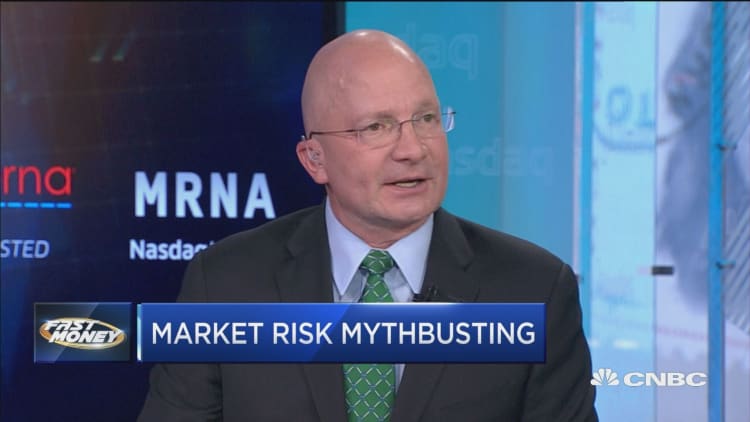With sitting less than 1% from its all-time high and on track for its fourth straight monthly gain, cautious investors can't help but wonder how long they can still ride on the back of this aging bull before everything comes crashing down.
Investors are used to erring on the side of caution. In fact, fear has been accompanying this record-long bull market since the beginning in 2009 and the persistent worry is bound to drive the market to new highs, according to James Paulsen, Leuthold Group chief investment strategist.

"Unlike any in at least the last 50 years, the contemporary bull market has coexisted with a tall and persistent Wall of Worry," Paulsen said in a note to clients. "The Worry Gauge suggests most investors already expect, and are prepared for, a difficult future."
Paulsen looked at the ratio between the price of gold relative to the overall Commodity Price Index, which he divides by the price performance of small caps stocks relative to large caps — what he calls a behavioral-based "worry gauge." Investors tend to flee to safe-haven gold when risk is off and turn to more aggressive investments like small caps when they are confident.
It turned out the gauge has been in its top-two quintiles almost 75% of the time during this bull market. The reason for the degree of fear is that investors have witnessed many worrisome economic signs in this expansion, including sluggish growth rate and job gains as well as the record low global interest rates, Paulsen pointed out.
The Worry Gauge soared amid the global manufacturing recession in 2015 and continued to stay on the high level from then on. The only time in the last four years the indicator has dipped below its highest quintile was when the stock market peaked in September 2018.
So what does it mean for the market?
Looking at stocks' forward performance since 1970, when the worry gauge was in the top quintile, the S&P 500 pulled off an 18.48% annualized return within three months, or 4.33% nonannualized, Paulsen said. What's more, there has only been a 25% chance that of a loss within 13 weeks.
"As it has during much of this recovery, the stock market continues to climb a Wall of Worry," Paulsen said.
To be sure, many factors are at play when projecting the market's direction. While the fear-based investment actions point to more gains on the horizon, risks such as an accelerating earnings slowdown and Federal Reserve's policy uncertainty could still weigh on the market.


